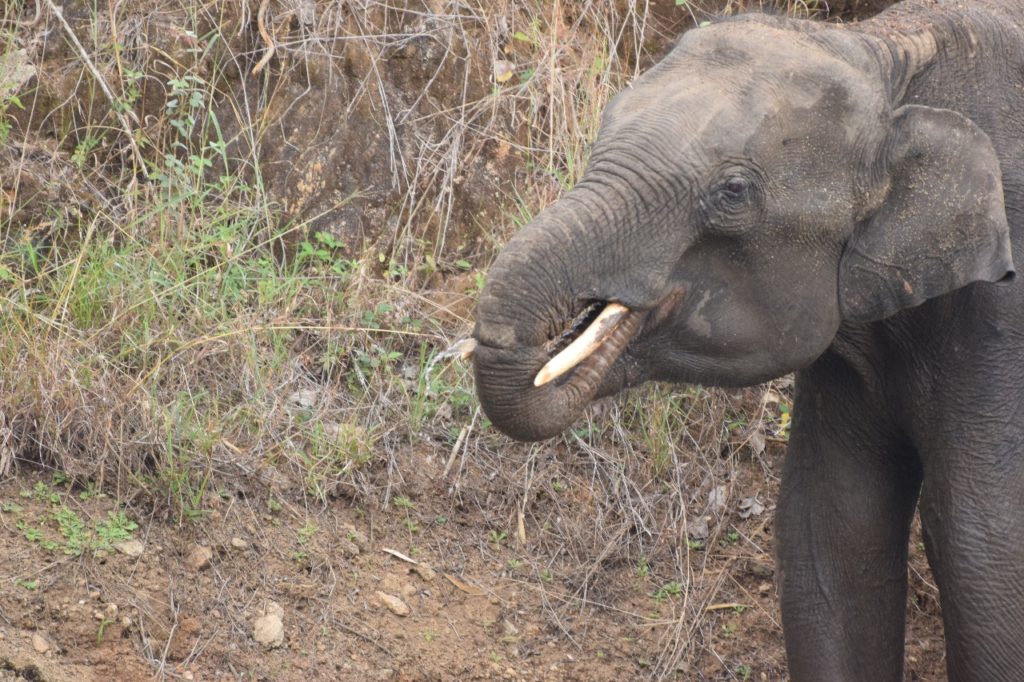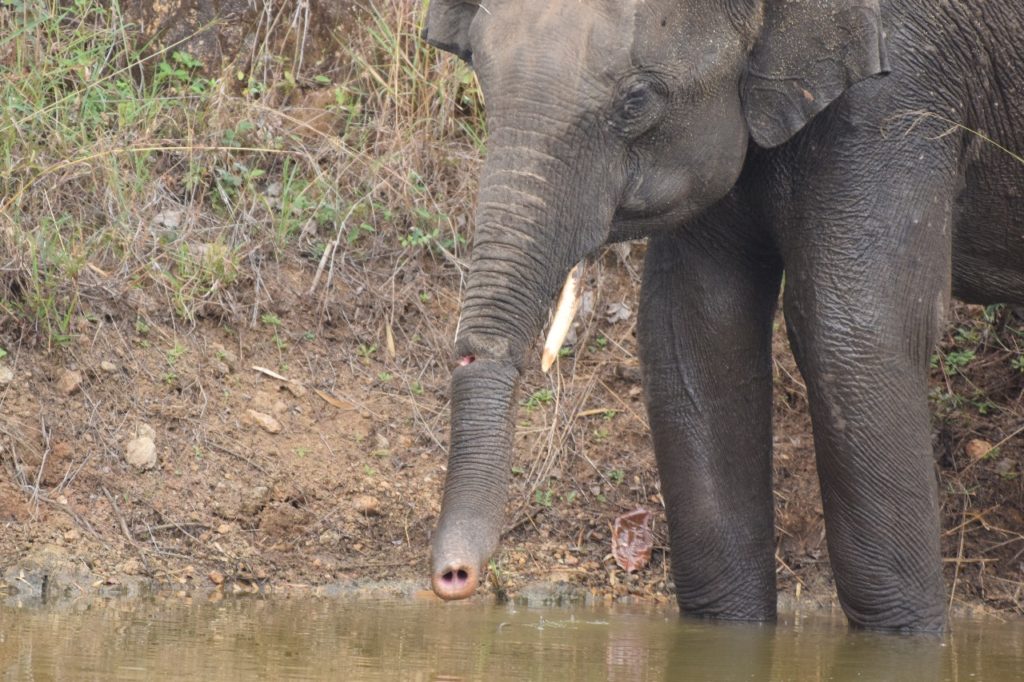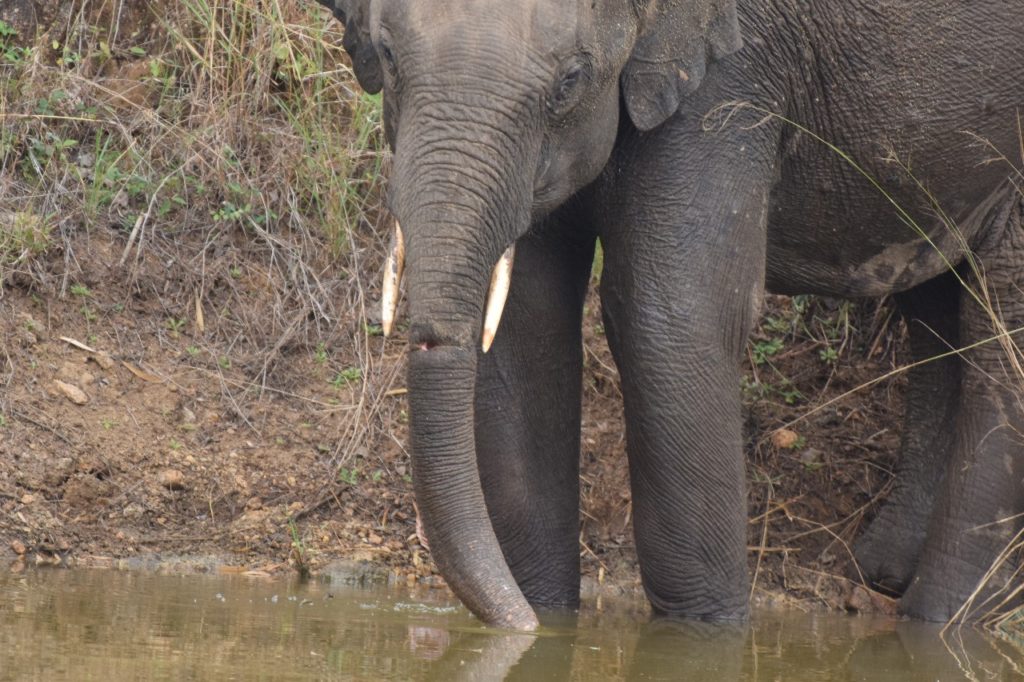Meera Bhardwaj
Even as environmentalists and citizens of Bengaluru are fighting their heart out to regain the reduced ESZ of Bannerghatta National by 1oo square kilometers – two naturalists in Ragihalli [just 27 kilometers from the city] noticed a horrible sight of a tusker quenching its thirst in a waterhole but with great difficulty. The poor elephant’s trunk had a sizable circular wound and all the water it had drunk was leaking out from its injured section.

This elephant was seen in Harohalli Range of Bannerghatta National Park and naturalists who witnessed the plight of this elephant immediately informed the concerned forest officials. It is also reported that the same elephant had been seen last year also.
Now this young tusker was sighted at a waterhole in a private property which has been completely left for the sake of wildlife so that they could thrive without any human interference. A few days back Vishnu Narayan and Bhanu Prakash noticed this young elephant pathetically trying to quench its thirst even as the water was slipping away from the frontal portion of the trunk. They said, “We hope the elephant is provided the necessary treatment otherwise it will have lot of problems.”

Bhanu Prakash told Green Minute that this was in the Ragihalli Corridor area and it was very distressing to see the elephant’s condition. He added, “The last few years with human interference and poaching increasing in these regions – big mammals including elephants and antelopes have been targeted by poachers and hunters. This elephant with its wound is not a recent happening – poachers are involved in this and the pachyderm must have escaped somehow but in the process sustained this injury. There is so much of poaching going on and this is what happens when foresters are indifferent to the problems of wildlife. With ESZ reduction one can imagine the plight of these animals.”
However, Chief veterinary officer and Asst Prof, KVAFSU, Dr H S Prayag ruled out any gunshot wound and said, “Prima facie it looks like an injury maybe caused by a snare as it is a circular depression and the wire may have fallen off. There seems to be no infection. This is not a gunshot wound at all as there should be an exit point for that. One can clearly see water falling from the frontal part and not from the back so it is clear that it has not been caused by any gunshot as it has to be through and through.”

Dr Prayag added, “If the injury has happened some time back – I would advise forest officials to leave it as it is and not go in for any capture operations. Any elephant usually consumes about 150-200 litres per day and this elephant can compensate the loss of water by drinking more. Only if the situation is serious – the animal has to be darted and observed for future course of action. But if it has survived for one year – it is better to leave as it is. I strongly suggest no capture or captivity unless the situation warrants but only after observation and evaluation. Any decision that has to be taken – has to be scientific and for the welfare of the animal.”
Presently, search is on for the injured elephant with forest staff combing the area for any sign of the young pachyderm.
SAVE BANNERGHATTA CAMPAIGN
Meanwhile, the Save Bannerghatta for Bengaluru campaign has already garnered 50K support and citizens and conservationists who are leading the campaign would like to take up the issue of poaching and snaring of wildlife in Bannerghatta. Their grouse not much is being done for protection of wildlife including elephants despite many complaints.
Added to this, they say with the buffer zone shrinking by 100 square kilometers – it is tough days for the inhabitants of Bannerghatta National Park.
Concerned about the plight of this injured elephant urban conservationist Vijay Nishant said, “This is nothing new as wildlife has been suffering with people out to grab the corridor area of the elephants. Now with the state government reducing the ESZ by 100 square kilometers as also keeping the extent a ridiculous 100 meters on the northern boundary of the park – what kind of protection will the elephants and other wildlife have?When the mining companies closed their operations last year we saw herds and herds of elephants back as they were facing lot of disturbance to their habitat earlier. We hope the reduction in ESZ is stayed by the high court and Bannerghatta National Park gets back its buffer zone of 269 sq kms.”

Comment here